Paul Evans Revolutionized the American Craft Movement With His Metal Designs. Now, a Gallery Is Spotlighting His One-Of-A-Kind Creations
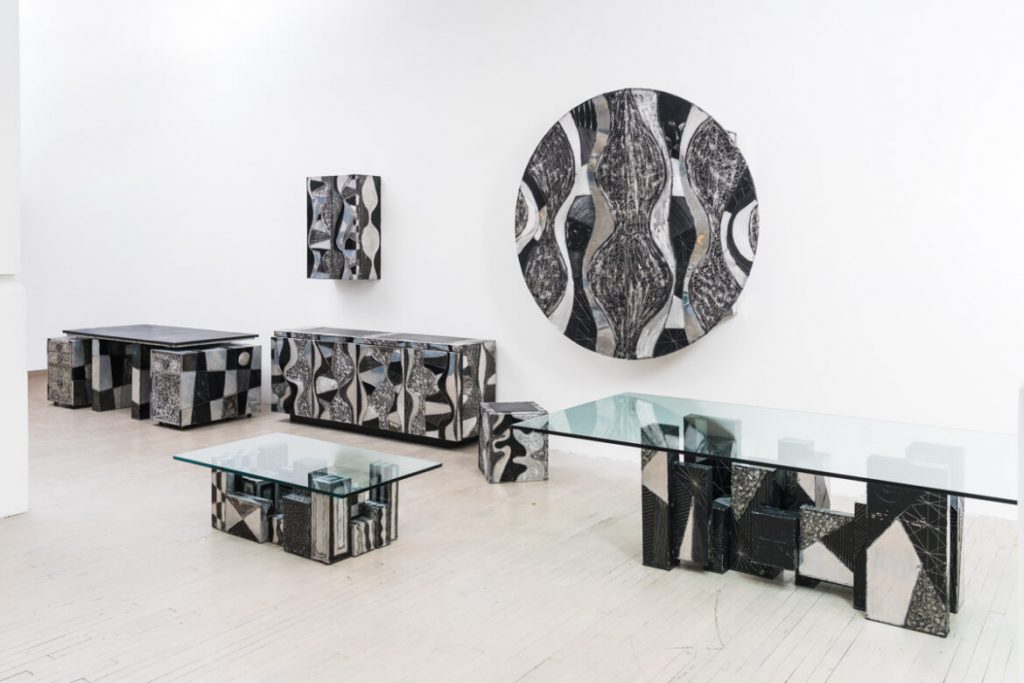

Artnet Gallery Network

Metal was the unconventional medium favored by late American furniture designer and sculptor Paul Evans—and it helped him define his unique vision in the American Craft movement of the 1970s.
His series “Argente,” which is Latin for silver, has become especially prized in recent decades, both for its melding of technology with hand-crafted touches and the rare visibility of the works in public.
With the current exhibition “Paul Evans: The Argente Series,” New York’s Todd Merrill Studio has done the near-impossible act of bringing together “Argente” works from three separate private collections, in what promises to be the largest grouping of the series for the foreseeable future.
The works were produced in aluminum from 1965 to 1972 and are characterized by the contrasts of blacks and reflective silvers, on which pictographic shapes and patterns are inscribed. Despite the popularity of the collection, “Argente” was one of Evans’s shortest-lived series, both due to its high production cost and the inherent hazards of working with the materials in the studio—in turn making the works even more collectible.
The centerpiece of the exhibition is the Argente Disc Bar—a wall hanging cabinet with a circular front and demi-lune doors, no examples of which were known to exist in this series until this work’s recent discovery. The work was commissioned by a Virginia collector between 1967 and 1973 along with a unique three-part desk with slate top, two large rolling cabinets, a monumental dining table, a large low table, and an oversized cube table—many of which are believed to be the only examples of these works in aluminum.
See images from “Paul Evans: The Argente Series” below.
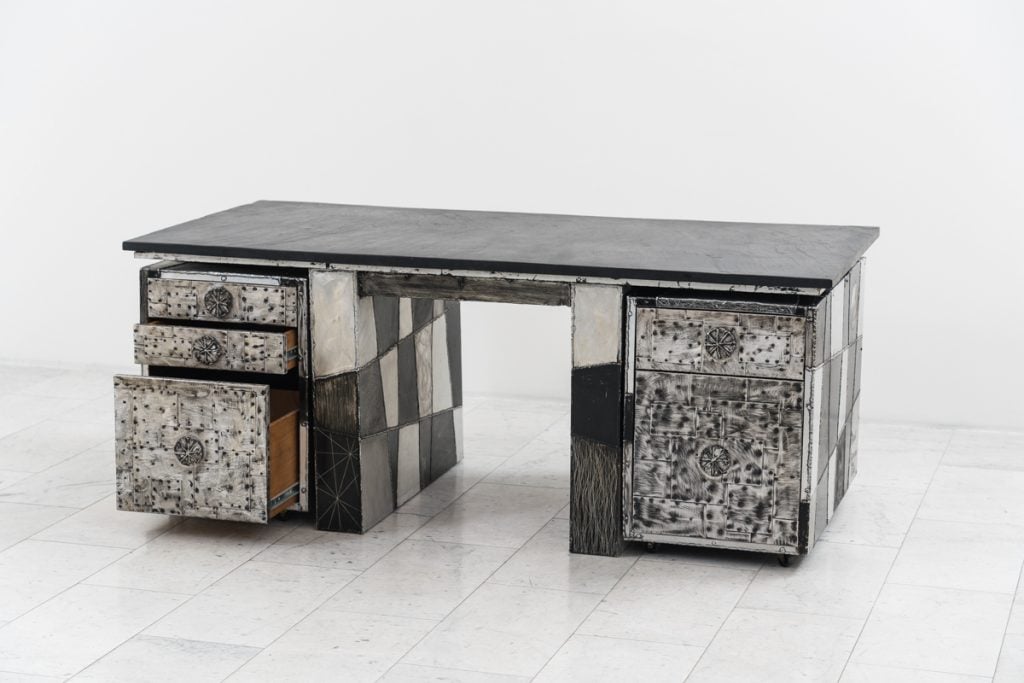
Installation view of “Paul Evans: The Argente Series” at Todd Merrill Studio.
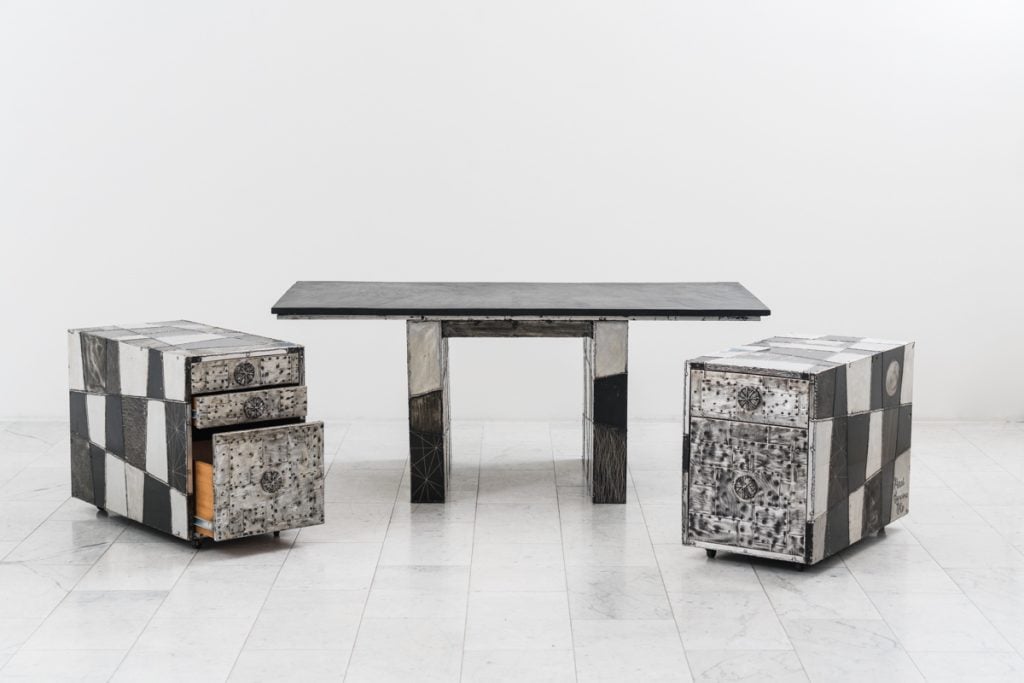
Installation view of “Paul Evans: The Argente Series” at Todd Merrill Studio.
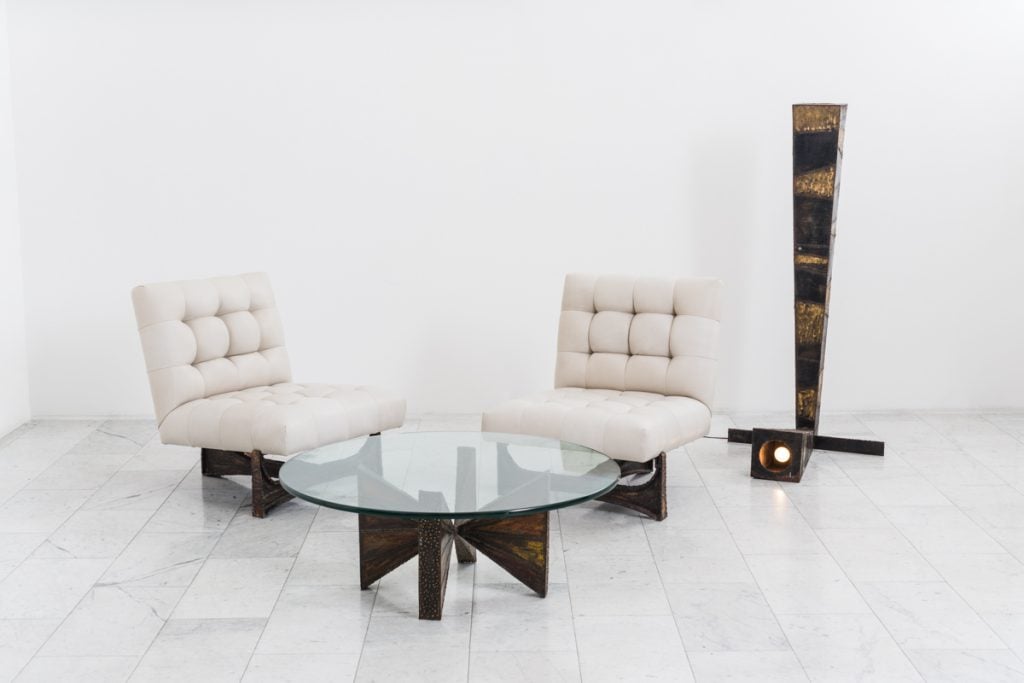
Installation view of “Paul Evans: The Argente Series” at Todd Merrill Studio.
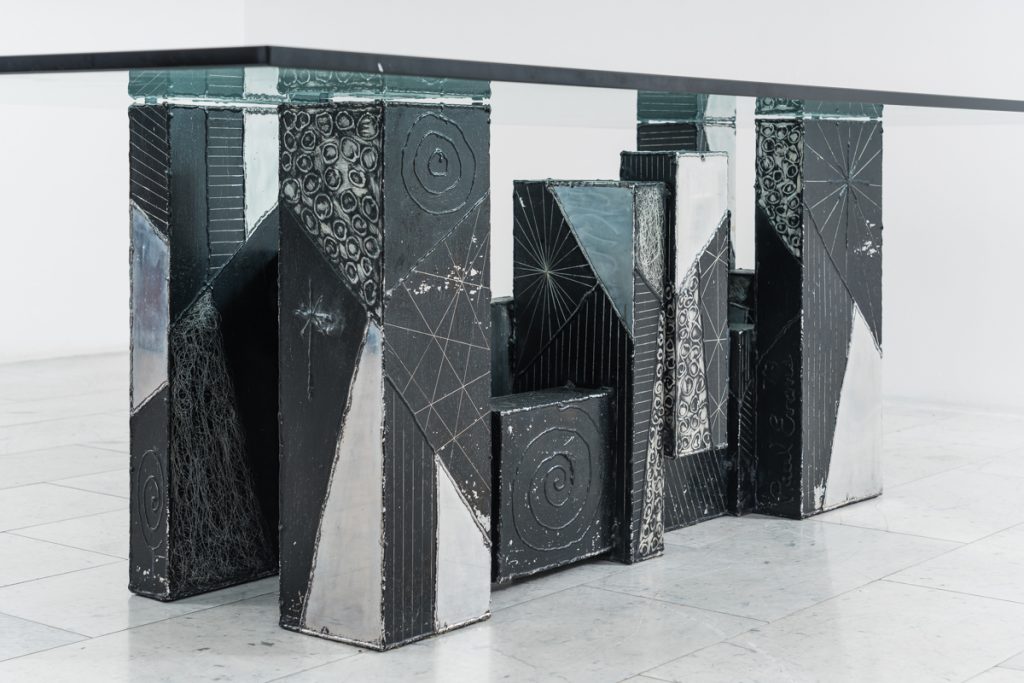
Installation view of “Paul Evans: The Argente Series” at Todd Merrill Studio.
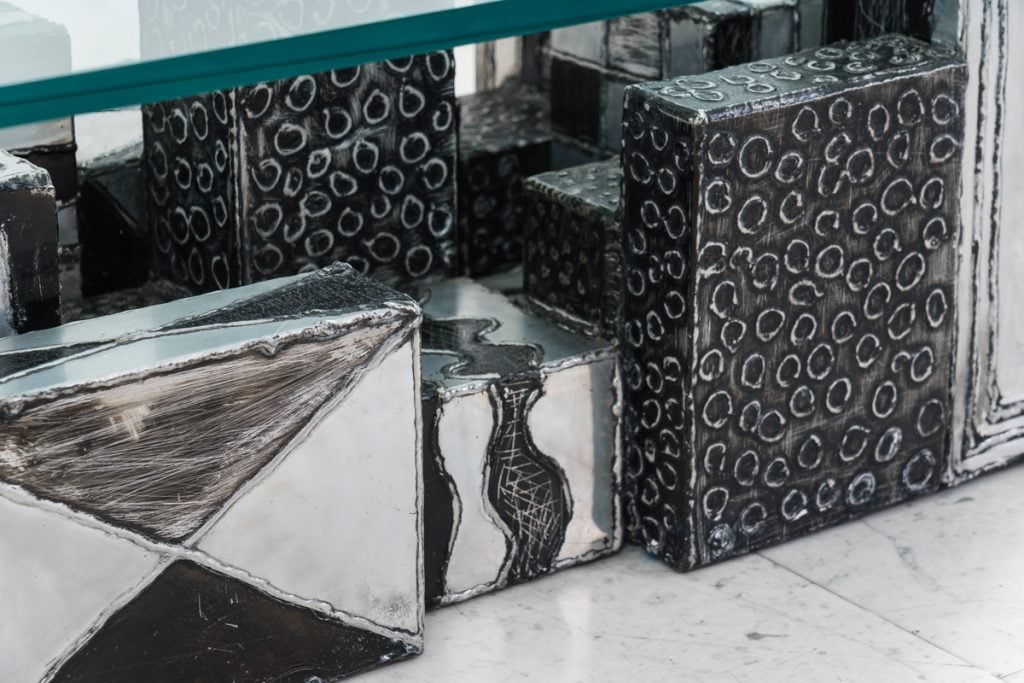
Installation view of “Paul Evans: The Argente Series” at Todd Merrill Studio.
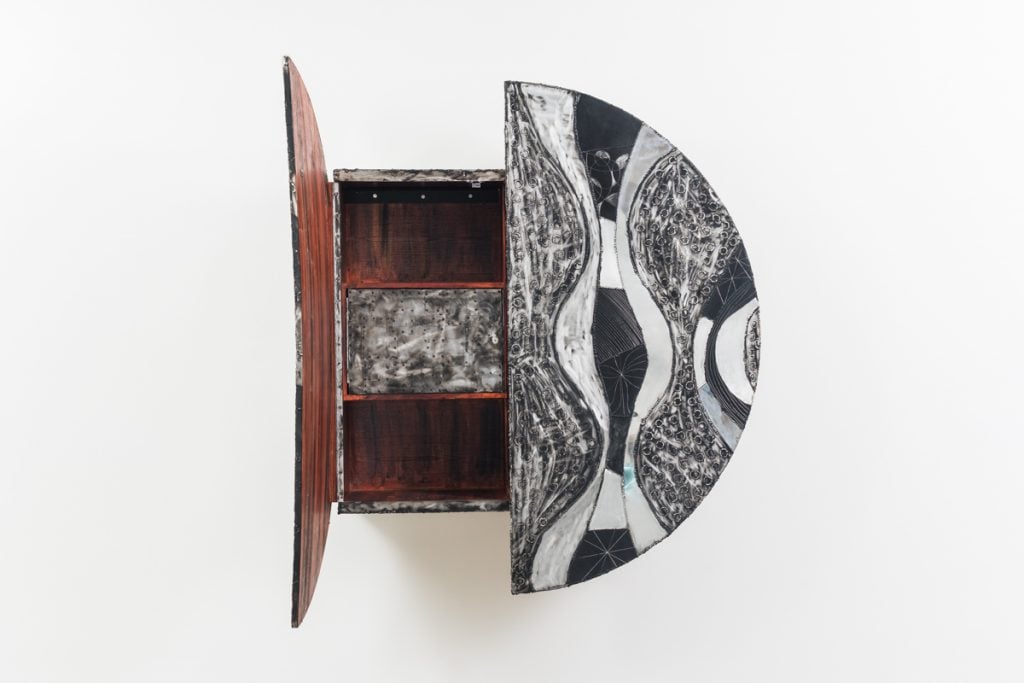
Installation view of “Paul Evans: The Argente Series” at Todd Merrill Studio.
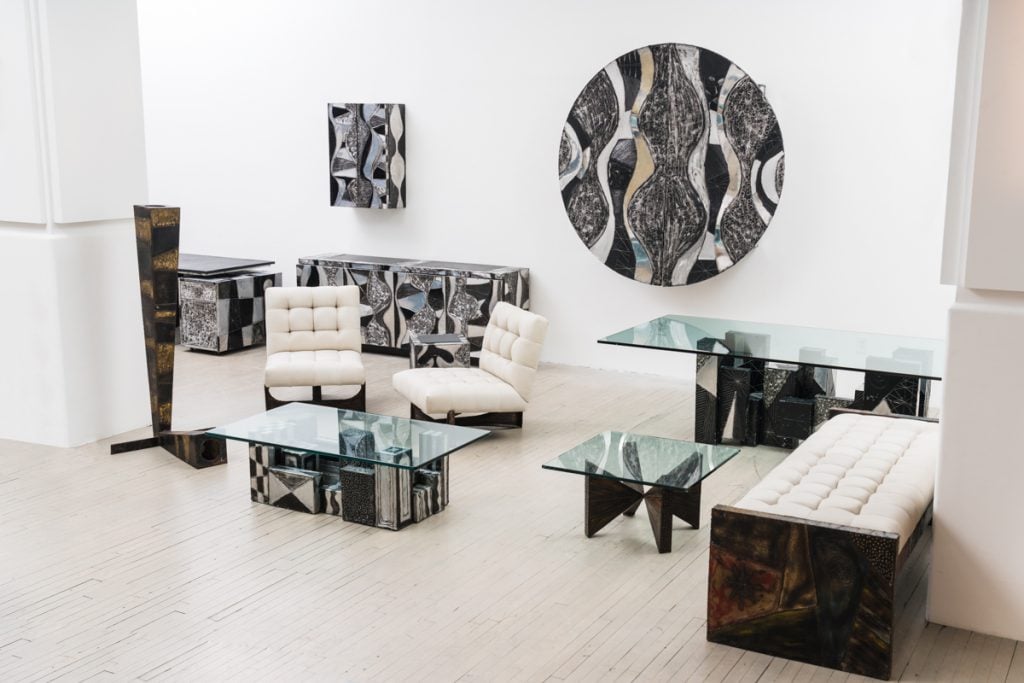
Installation view of “Paul Evans: The Argente Series” at Todd Merrill Studio.
“Paul Evans: The Argente Series” is on view at Todd Merrill Studio through November 24, 2020.
